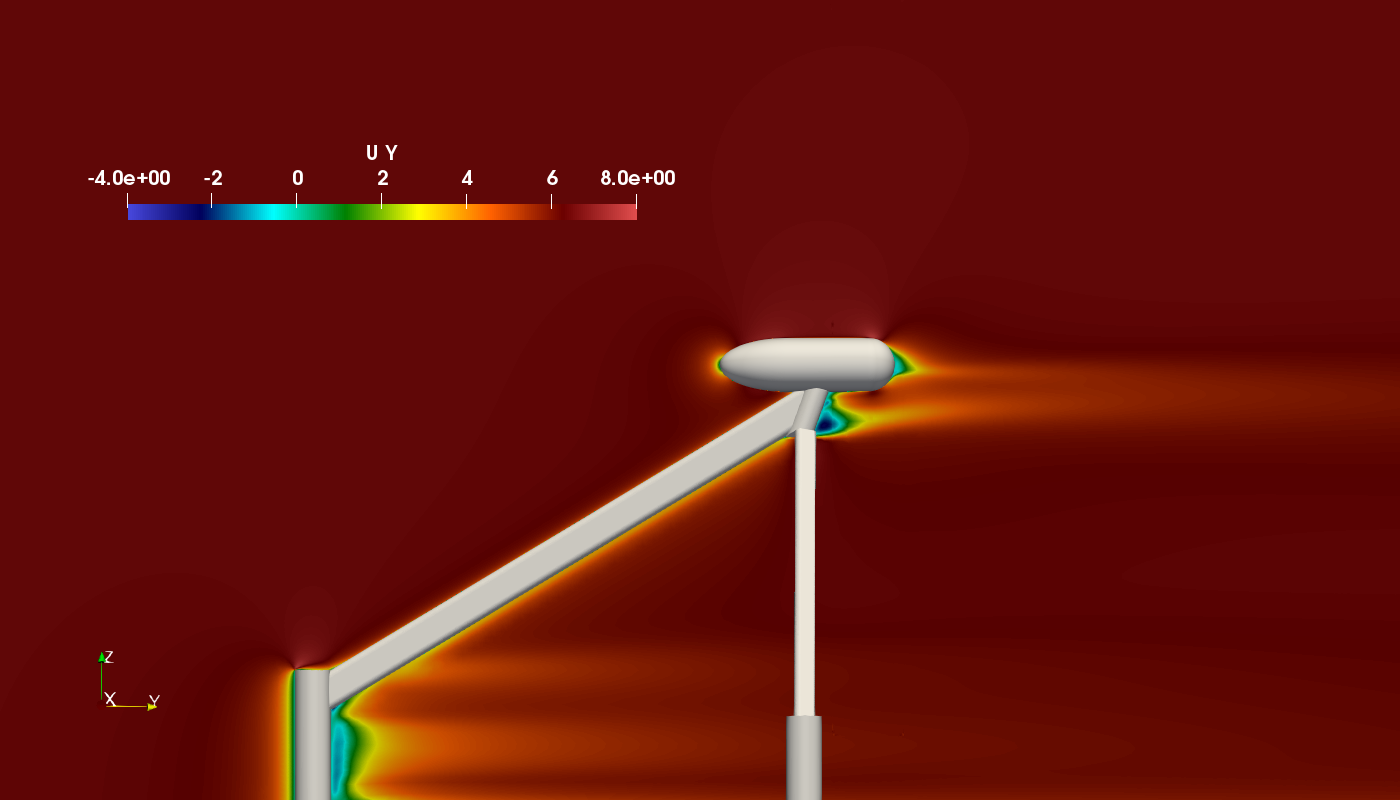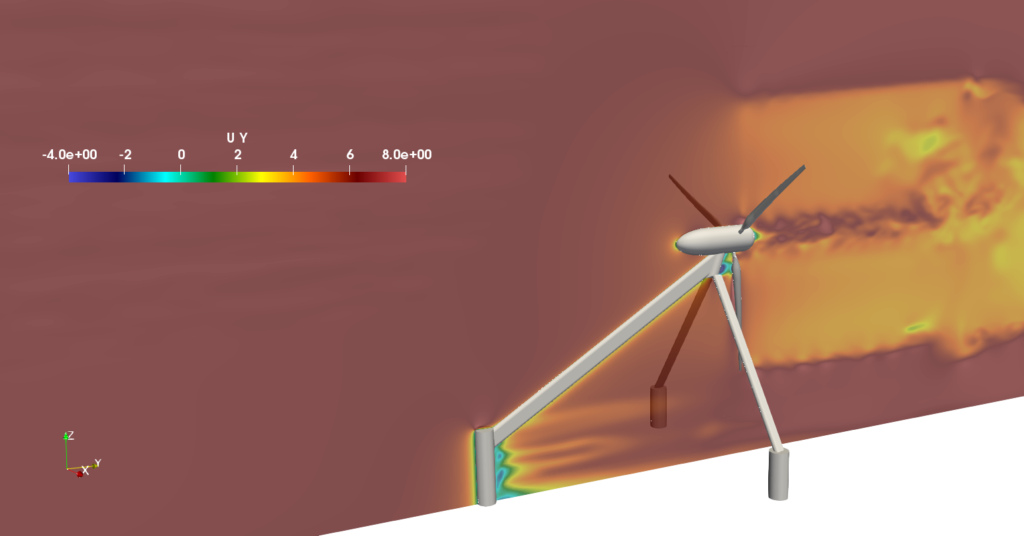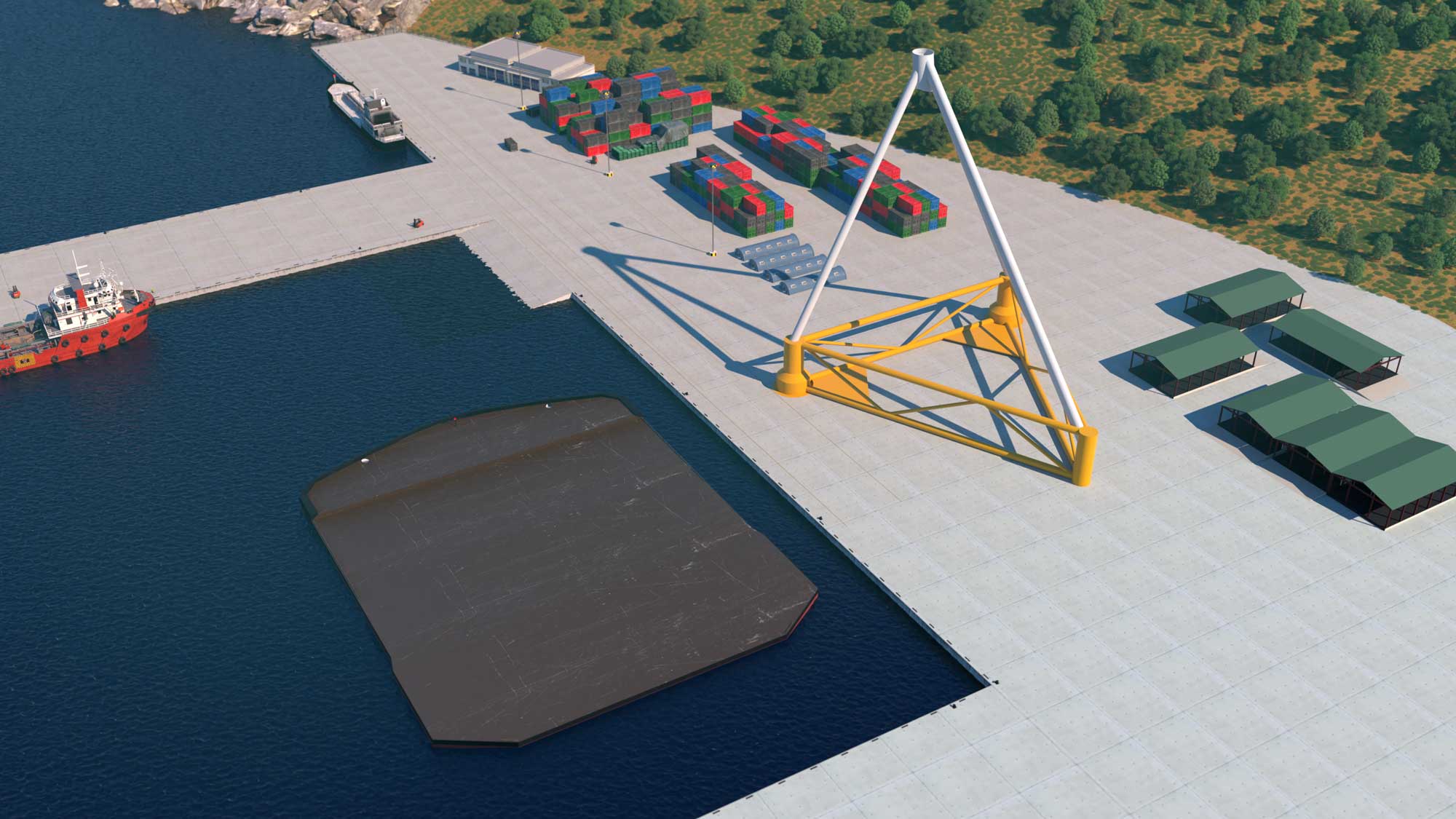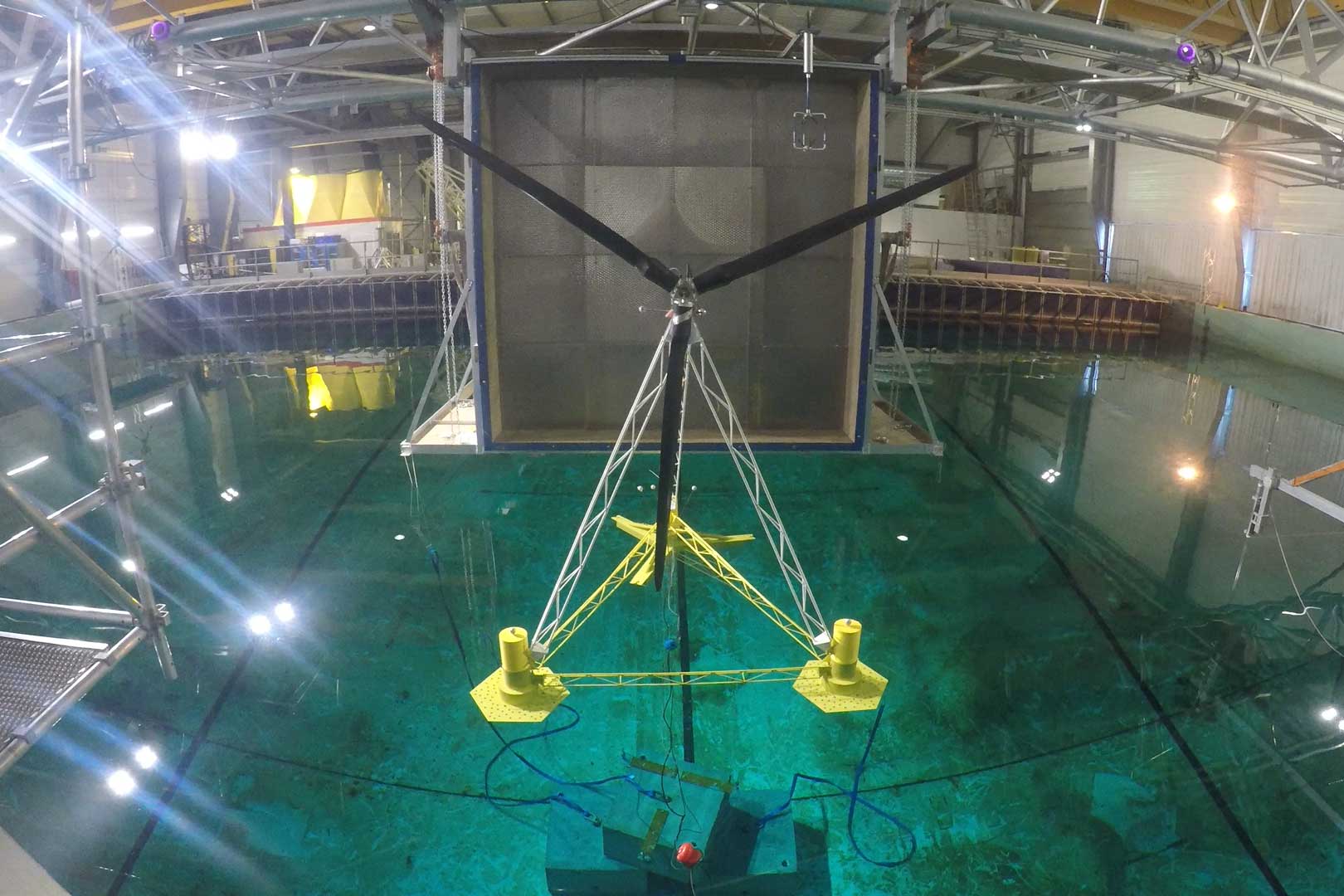X1 Wind’s innovative floating wind concept introduces an integrated design where the whole floating structure passively orientates with the wind (yawing) instead of using a fixed tower and an active yaw mechanism on the turbine. By doing this, it is possible to drastically reduce the bending moments on the tower base, saving significant steel weight, which is one of the critical cost drivers of current floating wind systems.
Fraunhofer IWES carries out CFD simulation of X1 Wind’s downwind solution
October 14, 2020
Fraunhofer IWES has completed the CFD (Computational Fluid Dynamics) simulation of X1 Wind’s downwind floater design, prior to the deployment of its demonstrations prototype in the Canary Islands to be installed in late 2020. this activity has been funded by Acció.

Example of the velocity field distribution for the X1 Wind’s floating platform configuration
This efficient structural design requires the use of wind turbines in a downwind configuration. While upwind turbines are currently mainstream, downwind turbines are being more and more common in floating systems given their better scalability when moving towards turbines of 15MW and beyond. Downwind turbines mounted on traditional towers are subject to a velocity deficit due to the tower shadow effect, but X1 Wind’s improved design allows a drastic reduction of the tower sections as well as the use of more aerodynamic profiles.

Velocity component Uy along the vertical symmetry rotor plane
Within this study, Fraunhofer IWES and X1 Wind have simulated X1 Wind’s X30 floater integration with a Vestas V29 turbine. These simulations have helped X1 Wind to better characterize the aerodynamic forces acting on the structure and rotor of the X30 platform. This allowed a detailed evaluation of the wake of the structure and the real axial velocity deficit of the floating platform, which proved to be lower than those for conventional downwind towers according to an earlier 2D study performed at X1Wind in which the axial velocity deficit behind a truss mast was compared to the one behind a conventional tubular tower of 5m of diameter. Additionally, the dynamic excitation of rotor blades (3P, 6P) due to tower shadow was found to be very low. The results will be validated with real data after the deployment of the prototype at PLOCAN test site in the Canary Islands.
About X1 Wind
X1 Wind mission is to develop highly scalable solutions to reduce carbon emissions and provide affordable clean energy globally. In the last years, X1 Wind has continued to develop its disruptive floating wind technology, completing the design of a fully functional part-scale demonstrator, and successfully executing several testing campaigns, putting together a team of experts with decades of experience in the offshore wind and marine sectors. The company has been recognized as one of the cleantech start-ups with highest potential impact in Europe.
About Fraunhofer IWES
Fraunhofer IWES has been developing CFD methods for wind turbine aerodynamics for several years. The implementations of Fraunhofer IWES are capable of simulating full downwind turbines including different tower shapes, flexible blades in sheared wind conditions, under yaw, and many other options. The approach has been validated on several measurements within the IEA-Wind Task 29 (MexNext I, II, and III – and currently IV).
About ACCIÓ Startup Capital
ACCIÓ is the Catalan Government’s agency for enterprise competitiveness. Attached to the Ministry of Enterprise and Knowledge, it specializes in promoting business innovation and internationalization and has a network of 40 offices worldwide. ACCIÓ Startup Capital is a direct grant for emerging technological startups that require financing to set about the initial phases of the business, to develop their product or service and to validate the business model for accessing the market.

